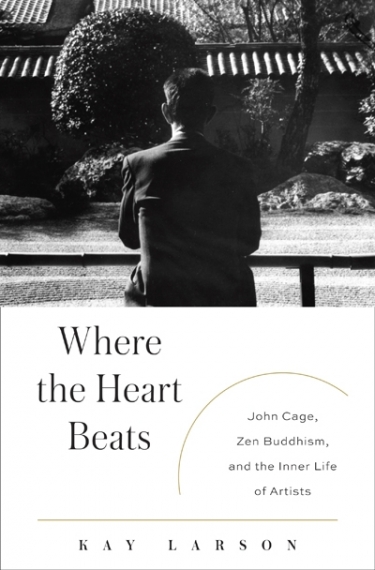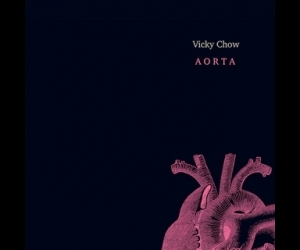
How very different the Western art world might have been—the structure of ideas, certainly, but also the structure of emotions, the hierarchy of belief—without the arrival in New York City in 1950 of a Japanese man who was “barely over five feet tall, and almost invariably wore sports jackets and slacks.” Dr. D. T. Suzuki had only an honorary degree with which to claim the title “Doctor,” and despite some misunderstandings, he was not actually a Zen master. He sometimes acted like one, rewarding crowds who’d come to see him with cryptic, koan-like pronouncements. And while not a master, he was the closest to one that most of those Western crowds had seen.
Where The Heart Beats is primarily concerned with Suzuki’s Zen Buddhist teachings in the West, with the germinal phases of Cage’s adult life, and with the manifestation of Zen Buddhist ideas in his music—which, in classic Zen fashion, sometimes seemed like nothing at all.
Author Kay Larson, a practicing Zen Buddhist, carefully stakes out Cage’s early life, his Schoenberg phase, and his affection for, and eventual compositional incorporation of, non-musical objects that could produce sounds, and therefore counted as musical instruments in his world. She’s careful, though, to ground all of this in the story of Suzuki and the Japanese history that shaped him. She enjoyed access to Cage’s journals, so when Cage writes, for example, “I wanted to be quiet in a non-quiet situation . . . a quiet mind is a mind that is free of its likes and dislikes,” it makes sense along the continuum of both men’s lives. Neither man gets lost in the larger tale of Western history, and Larson’s virtuosic juxtaposition of personal history and intellectual confluence makes for essential reading in this field.
Andrew Hamlin was born and raised in Seattle, Washington, USA, where he resides today. He attended the Evergreen State College in Olympia where he wrote and edited arts coverage for the Cooper Point Journal. He began writing professionally about music and the arts in 1992. He is the film critic for the Northwest Asian Weekly, and his work has appeared in the Village Voice, Rolling Stone Online, Seattle Times, San Diego Reader, Goldmine, Seattle Weekly, The SunBreak, and other publications.
He has still never found anyone who loves the Happy Flowers nearly so much as himself.



